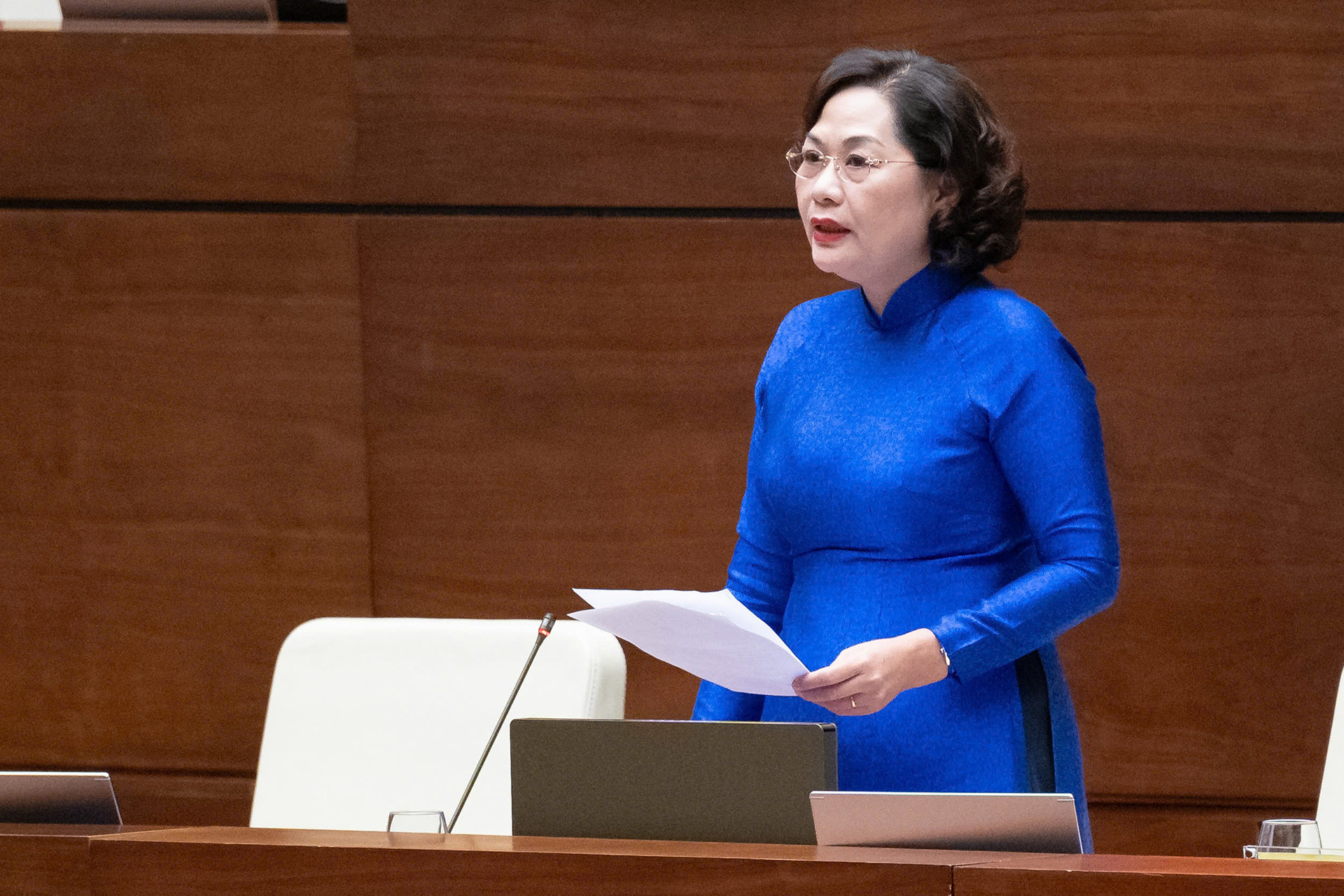On the morning of November 11, during a question-and-answer session, National Assembly Delegate Luu Van Duc (representing Dak Lak Province) referenced a government statement from April 14, wherein the Prime Minister outlined solutions for managing the gold market. This directive required the State Bank of Vietnam (SBV) and relevant agencies to implement effective and timely measures to stabilize the gold market.

"Can the Governor elaborate on how these directives have been enacted and their impact on current and future gold prices and the gold market?" deputy Duc inquired.
In line with this, deputy Pham Van Hoa (from Dong Thap) mentioned that the recent sale of gold bars by the central bank to stabilize prices had garnered strong public support. However, he noted that the bank was only selling gold, not buying it.
"If people need to sell gold for cash, where can they go? When the bank doesn’t buy, neither do the stores. Additionally, the sale of gold bars is limited to Hanoi and Ho Chi Minh City. Why is it not available nationwide to facilitate access for people who wish to buy?" Hoa questioned.
In response, Governor Nguyen Thi Hong explained that Vietnam’s gold market follows global trends. In response, the SBV proposed and implemented various measures to stabilize the gold market through Decree 24, starting in 2013.
Between 2014 and 2019, Vietnam's gold market remained relatively stable, with a decline in public demand for gold. From 2021, however, global gold prices surged, leading to a corresponding increase domestically. Despite this, the SBV refrained from intervention until June 2024.
In June 2024, as international gold prices hit record highs around $2,300-2,400 per ounce, the government urged immediate action due to the significant disparity between domestic and global prices.
In response, the SBV initially intervened by conducting nine auctions, though the price gap remained substantial. "Thus, to quickly reduce the disparity, we moved to direct sales through four state-owned commercial banks and SJC," said Governor Hong.
This approach reduced the domestic-international price gap from 15-18 million VND per tael to approximately 3-4 million VND. Nonetheless, Governor Hong emphasized that the market remains complex and volatile. Given that Vietnam doesn’t produce gold domestically, interventions are entirely dependent on imports.
"The SBV will continue to closely monitor these developments to enact policies aimed at stabilizing the gold market," she added.
"People can sell, but no one buys"
In a follow-up discussion, deputy Pham Van Hoa emphasized that his concerns reflected those of his constituents, stressing that this was a significant issue. While the central bank sold gold bars, it did not repurchase them, nor did private sellers, forcing citizens to resort to "black market" sales. "Why do we sell but refuse to buy?" Hoa asked.
He pointed out that people often buy gold bars from the bank, intending to sell them when in need of cash. Thus, the bank should also buy back these bars to ensure currency circulation.
"Selling continuously without repurchasing, while large amounts of gold are held by the public, makes no sense. The SBV should take this matter seriously," he argued.
Addressing this concern, Governor Nguyen Thi Hong explained that globally, gold prices fluctuate widely, sometimes within the same day.
The SBV must carefully assess the risks associated with buying and selling gold. "For example, if we buy gold from the public at one price, only for prices to drop afterward, we face significant risk," she noted.
Governor Hong concluded by reiterating the SBV’s consistent advice: "Gold is a highly volatile and unpredictable commodity. Those who choose to invest in it should be prepared for risk and the potential for financial loss."
Quang Phong, Tran Thuong, Thu Hang